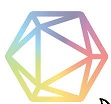Peningkatan Level Berpikir Aljabar Siswa Berdasarkan Taksonomi SOLO Pada Materi Persamaan Linier Melalui Pemberian Scaffolding
Abstract
Full Text:
PDF (Bahasa Indonesia)References
Anghileri, J. 2006. Scaffolding Practices That Enhance Mathematics Learning. Journal of Mathematics Teacher Education, 9: 33-52.
Bingolbali, Erhan. 2010. Pre-Service and In-Service Teachers' Views of the Sources of Students' Mathematical Difficulties. International Electronic Journal of Mathematics Education – HJMI. Vol 6, No.1.
Kolikant,Y.B. dan Broza, Orit. 2010. The effect of using a video clip presenting a contextual story on low-achieving students' mathematical discourse. Jerusalem: The Hebrew University of Jerusalem.
Laisouw, Ruslan. 2012. Profil Respon Siswa Dalam Memecahkan Masalah Aljabar Berdasarkan Taksonomi SOLO Ditinjau Dari Minat Belajar Matematika. Tesis tidak diterbitkan. Ternate: Program Pascasarjana Universitas Muhammadiyah Maluku Utara Ternate.
Lim & Idris. 2006. Assessing Algebraic Solving Ability of Four Form Students, Journal of Educatinal Mathematics vol 1: 55-73.
Lim & Wun. 2009. Superitem Test: An Alternative Assessment Tool To Assess Students' Algebraic Solving Ability. International Journal for Mathematics Teaching and Learning.
Lim & Wun. 2012. Assessing Algebraic Solving Ability: A Theoretical Framework. International Journal for Mathematics Teaching and Learning.
Miles, M.B., dan Huberman, A. M. 1992. Qualitative Data Analysis: an Expanded Sourcebook. California: SAGE Publicatiions, Inc.
Rosyadi, A.A.P. 2010. Meningkatkan Pemahaman tentang Faktorisasi Suku Aljabar dengan Menggunakan Bahan Manipulatif Potongan Kertas Bufallo di Kelas VII Semester I SMP PGRI 4 Malang. Tesis tidak diterbitkan. Malang: Program Pascasarjana Universitas Negeri Malang.
Slavin, Robert. E. 2006. Educational Psychology Theory and Practice, 8th ed. Boston: Pearson Education, Inc.
Sujiati, Anik. 2011. Proses Berpikir Siswa dalam Pemecahan Masalah dengan Pemberian Scaffolding. Tesis tidak diterbitkan. Malang: Program Pascasarjana Universitas Negeri Malang.
Thomas, Michael dan Tall, David.1986. The Value of the Computer in Learning Algebra Concepts. Proceedings of the Tenth International Conference on Psychology of Mathematics Education 313-318. London.
Walle, V. D., John, A.K, Karen, S., & Bay, W.J.M. 2010. Elementary and Middle School Mathematics, Teaching Developmentally (7th ed). Boston: Allyn & Bacon.
Wongyai, Piyavadee & Kamol, Natcha. 2003. A Framework in Characterizing Lower Secondary School Students' Algebraic Thinking. Srinakharinwirot University, Bangkok, Thailand.
DOI: http://dx.doi.org/10.58258/jime.v3i1.34
Refbacks
- There are currently no refbacks.
Copyright (c) 2017 Jurnal Ilmiah Mandala Education

JIME: Jurnal Ilmiah Mandala Education (p-issn: 2442-9511;e-issn: 2656-5862) is licensed under a Creative Commons Attribution-ShareAlike 4.0 International License.
Jurnal ini diterbitkan oleh Lembaga Penelitian dan Pendidikan (LPP) Mandala.
Alamat: Jl. Lingkar Selatan, Perum Elit kota Mataram Asri Blok O. No. 35, Jempong Baru, Sekarbela, Kota Mataram NTB.







.png)



